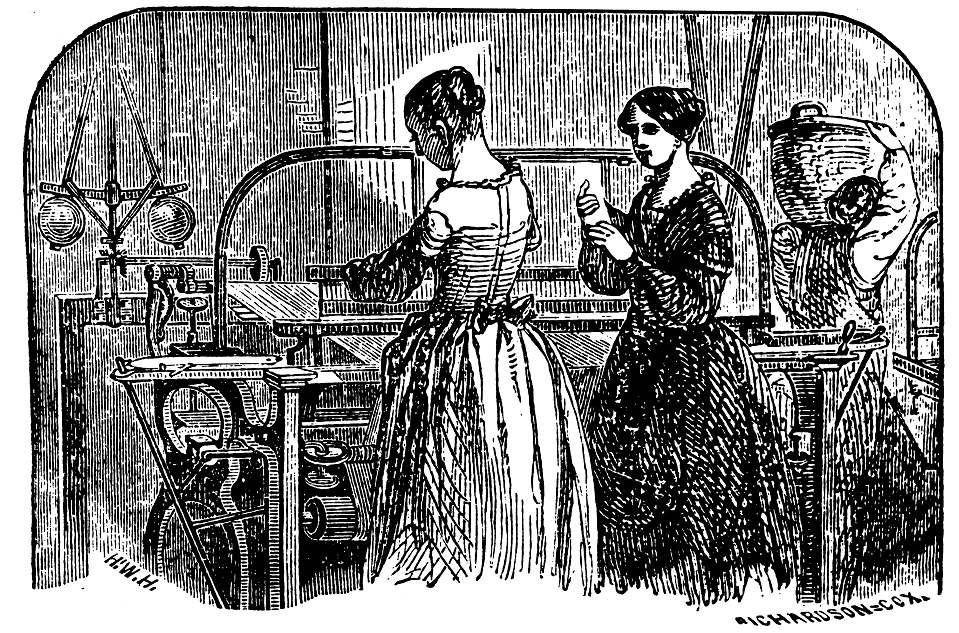The next obvious step in discussing the ways in which the nineteenth century shaped who we are today might seem to be the Civil War, having discussed slavery previously, but I will get to that later.
The next stop is the Industrial Revolution. With the improvements in textile machinery in Britain during the 18th century, the invention of the steam engine by James Watt, and the utilization of coal as a fuel to heat water and produce steam, it was inevitable that such improvements would eventually work their way to the colonies, later to become the United States.
During the eighteenth century and earlier products were made in small shops. For example, in my home town of Meriden, Connecticut, silversmiths worked in small shops to produce household items, and pewter shops making less expensive alternatives.
In 1793 Samuel Slater, a recent arrival from Britain, opened the first textile mill in the United States. He had worked in mills in Britain, and famously memorized the design of the machinery used to make cloth. He reproduced the machinery in his mill and started what was to become the Industrial Revolution in the United States. In the very early 19th century textile mills were established in Lawrence and Lowell, Massachusetts, producing cotton, wool cloth, and carpeting.
The revolution didn’t happen all at once. Initially these mils were supplied with yarn that was spun in local homes and delivered to the mills. Many households added income by having their daughters do this extra spinning. Eventually the machinery to spin yarn was developed and the whole production of cloth took place in the mill.
Young, single women were recruited to work in the textile mills. They left the farms and moved into dormitories overseen by matriarchs who kept a close watch over their charges. In Lowell they were called the “Lowell Girls.
” https://www.nps.gov/lowe/learn/historyculture/the-mill-girls-of-lowell.htm
https://www.nps.gov/lowe/learn/historyculture/the-mill-girls-of-lowell.htm
The impact of this mechanized production made cheaper, better goods available to people far away from the mills. The production went far beyond textiles. The idea of interchangeable parts developed by Eli Whitney for firearms extended o a myriad of household items.
In 1858 in Monmouth, Maine, two brothers ran a successful dry goods store. Monmouth, close to Augusta, had a rail line going through town and it brought shipped goods from many places. One of the brothers died in his fifties and an inventory had to be done for the probate court. The inventory included a complete inventory of the contents of the store. This remarkable record preserves a thorough listing of the goods available to people in small towns, ranging from utensils to a wide variety of cloth and other manufactured goods. This was the case across the country.
I can’t possibly describe the Industrial Revolution in one blog entry, but it is possible to spin out the implications:
-household goods were available for lower prices
-employment in factories meant a gradual decline in agriculture
-improvements in transportation speed made it possible for goods to be shipped to faraway places
And, it created a greater demand for raw materials. With a burgeoning population the demand for cheap clothing skyrocketed. New England could meet the demand for wool, but it couldn’t produce the other material needed.
Cotton.
A steamship loaded with cotton bales during the Civil War.
Here’s the connection between slavery and the Industrial Revolution. All the tumblers fell into position to unlock a vast source of wealth. Tobacco had stripped the land in the south of nutrients. Cotton was one of the few crops that could grow in the impoverished soil, but
it was expensive and labor intensive work to separate the seeds from the cotton boll, until Eli Whitney invented the cotton gin which could do it mechanically. As a result, slavery expanded significantly. The politics of slavery dominated the first half of the nineteenth century. Even with the end of the importation of slaves in 1808 slavery continued to be a political force. And, slaves became a more valuable commodity (it is very difficult to write this part, thinking of human beings as a commodity) which led to a brisk trade in smuggling slaves throughout this period.

Slavery was a brutal, inhumane system which turned people into commodities. If they refused to comply, their fate was Gordon's fate. Working in the cotton fields was back-breaking labor, and even children were required to help. The dirty secret of the Industrial Revolution in New England was that it was built on the backs of slaves. Literally.
The failed compromises of 1820 and 1850 gradually led to the dress rehearsal for the Civil War, the Border War, commonly called “Bleeding Kansas,” fought over the issue of slavery in Kansas.
I guess the Civil War is next